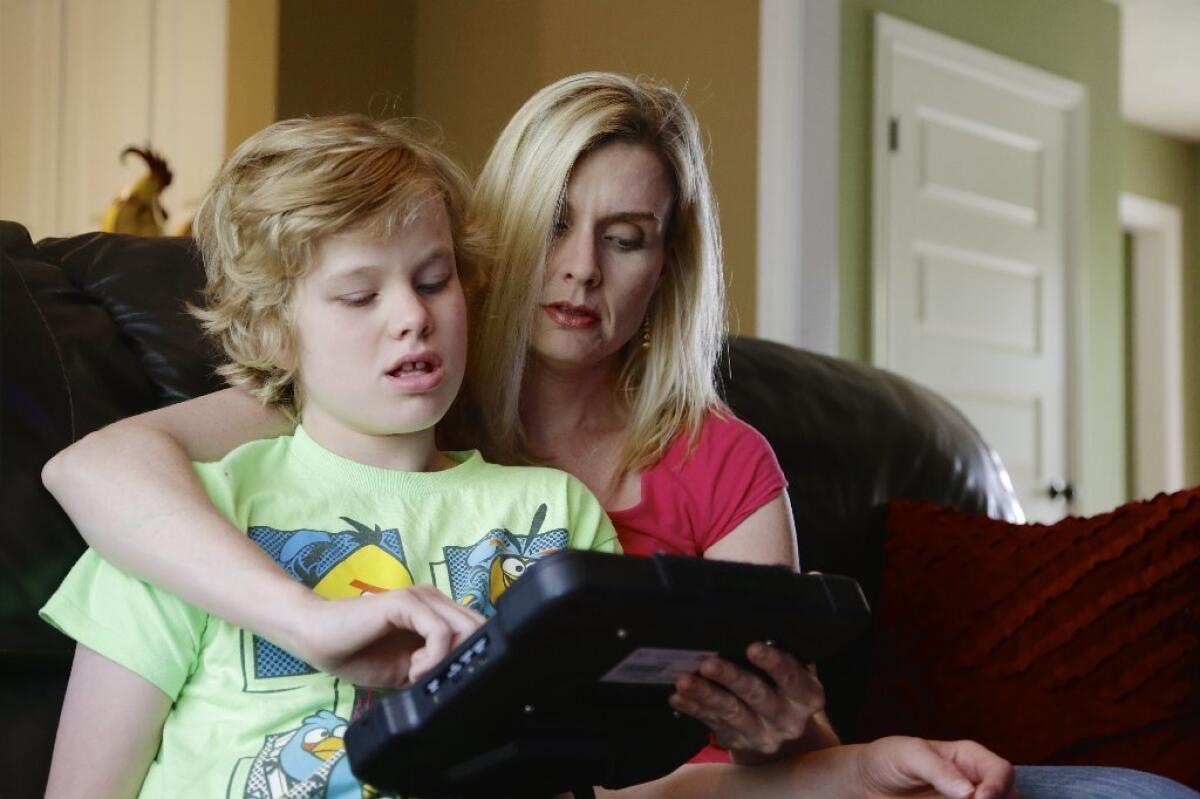Study: Price tag of autism in the U.S. exceeds $236 billion per year

- Share via
Good health is priceless, but autism spectrum disorders can be very expensive. A new study estimates that the lifetime cost of being diagnosed with autism in the United States is somewhere between $1.43 million and $2.44 million.
Either of those totals is enough to give most people sticker shock. The figure at the low end of the range is for people on the autism spectrum who don’t have intellectual disabilities. The higher tally is for people who do, according to a study published Monday by the journal JAMA Pediatrics.
To put it into perspective, $1.43 million is more than enough to put five students through Harvard without any scholarships, grants or other discounts, or to send five people into space via Virgin Galactic. For $2.44 million, you could buy Beau Bridges’ 6,800-square-foot home in the Los Angeles suburb of Hidden Hills.
When it comes to autism expenses, what that money buys depends on the age of the person with the diagnosis. For children, it pays for special-education services, the researchers found. These include early-intervention treatments for children under the age of 3 that can put them on a trajectory for a more successful life. Another big chunk of money represents the lost productivity of parents who care for children with autism.
For adults, the biggest costs were tied to living expenses, especially in facilities that require lots of staff. That was followed by medical expenses and the lost productivity of people on the autism spectrum.
The study authors relied on estimates from the Centers for Disease Control and Prevention to estimate that there are 3,540,909 Americans with some form of autism. Assuming that 40% of them have an intellectual disability, the total cost of autism in the U.S. is on the order of $236 billion per year.
If the proportion of people with an intellectual disability is more like 60%, the total annual cost jumps to $262 billion. That’s more than the U.S. Treasury paid in interest on the national debt in the entire fiscal year that ended on Sept. 30, 2013.
The study also tallied the expenses for people with autism in Britain. Even though both countries have “different approaches to healthcare provision,” the total costs were remarkably similar, the researchers wrote.
These are huge sums of money, and it’s time for people to start thinking in a different way, according to a pair of experts from the A.J. Drexel Autism Institute at Drexel University in Philadelphia. Instead of focusing on the “costs of helping needy people,” the outlays should be seen as “investments in building stronger communities,” they wrote in an editorial that accompanied the study.
“Adopting an investment perspective also means taking a long view on life course outcomes,” they wrote. “We need a Framingham [Heart] Study for autism spectrum disorders, especially to track risks and outcomes into middle and later adulthood.”
Follow me at @LATKarenKaplan for more news about discoveries from the world of science and medicine.







